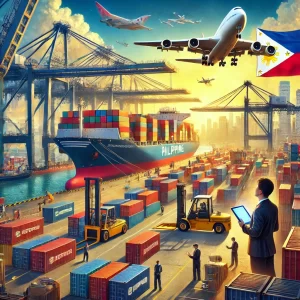Shipping containers is now one of the world's useable trade equipment. The dimensions, fittings and stackability of delivery packing containers are standardised with the aid of using the International Maritime Organisation (IMO) and distinct withinside the ISO Standard 668. The packing containers are commonly Twenty or Forty foot in length. Shipping containers may be transported over land and water with none problems, when you consider that they're smooth to healthy to trains and HGVs.

Many people don’t think of shipping containers that transport goods to storefronts outside of the logistics industry. It’s hard to imagine how difficult it was to ship goods around the world before the invention of the standard shipping container. Fortunately, many innovations continue to drive the transport and logistics industry and facilitate international trade.
What is a standard shipping container?.
A standard shipping container is an indispensable and widely used steel container for transporting goods. While it may not seem like a groundbreaking invention, most shipping containers have standardized dimensions that make loading and unloading goods across all modes of transport easier. But behind the standard container is a long story and of course an extraordinary person.
The first use of containers.
Before the first shipping containers, cargo was handled manually as general cargo. Goods transported by van from factory to ships, warehouses, boats and other destinations. This method required excessive handling, caused delays, increased costs, wasted time and proved unreliable as the frequency of deliveries increased. In the late 18th century, companies in Great Britain first used shipping containers for combined rail and horse transport. In the 1830s, the railroad carried containers suitable for other modes of transportation. The US Army used small, standard-sized shipping containers during WWII, which helped speed up the distribution of supplies.
The invention of the standard shipping container
Malcolm McLean invented and patented the first standard shipping container in the United States in 1956. Although not a sea carrier, he owned the largest trucking company in the country at the time. Little by little, McLean figured out how to make intermodal transportation smooth and efficient. When McLean began his trucking business, it was common to load and unload cargo in odd-sized wooden crates.
As he watched dockloaders being moved and cargo being transferred, he was amazed at how inefficient the method was. McLean knew truckers and shipping companies would benefit from a standardized intermodal freight transfer process. McLean knew it was time to transform the logistics industry and bought the Pan Atlantic Tanker Company and all of its shipping assets. With that, he began experimenting with better methods of loading and unloading trucks.
Eventually, McLean eventually developed what is now the standard shipping container. It is robust, anti-theft, reliable and easy to transfer. In April 1956, the first container ship, the Ideal X, left Port Newark and successfully made its way to Houston.
Standard containers made a true revolution in freight transportation and changed international trade in a variety of ways, including:
- Increased safety: Cargo began traveling sealed and safe in shipping containers, reducing pilfering and damage on all conveyance stages.
- Reduced manual labor: Containers reduced the work required for loading and unloading, dramatically changing the character of port cities worldwide. Cranes substituted manpower, and ports evolved to accommodate larger ships and loading facilities.
- Increased efficiency: Innovation in the shipping process reduced the expense of international trade and increased its speed by significantly shortening shipping time.



